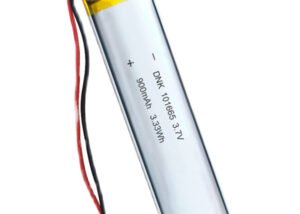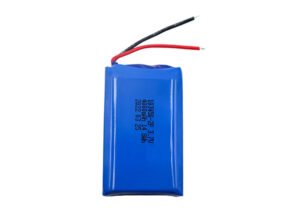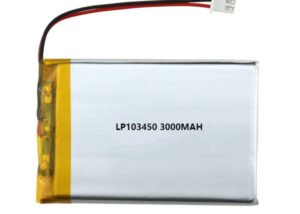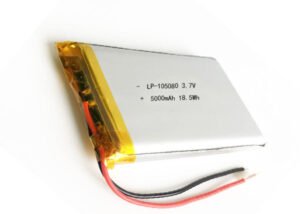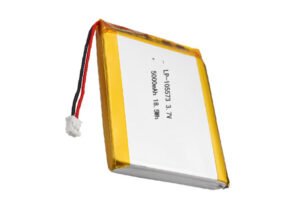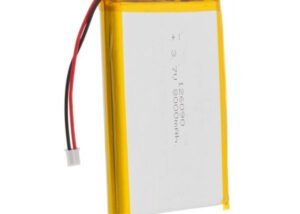Lithium Polymer Battery in Communication Devices
A lithium polymer battery, also known as LiPo battery, is a rechargeable battery that uses a polymer electrolyte instead of a liquid electrolyte. Lithium polymer batteries are known for their high energy density, low self-discharge rate, and lightweight design. They are commonly used in portable electronic devices such as smartphones, tablets, laptops, and drones. The importance of lithium polymer battery in communication cannot be overstated. The battery is a critical component of communication devices, powering them for extended periods without the need for frequent recharging. Lithium polymer batteries are also lightweight and compact, making them ideal for use in portable communication devices.
The purpose of this article is to provide a comprehensive overview of lithium polymer battery technology, its role in communication, factors that affect its performance, safety precautions, and future developments.
Understanding Lithium Polymer Battery
A lithium polymer battery is a type of rechargeable battery that uses a polymer electrolyte instead of a liquid electrolyte. The polymer electrolyte is a solid material that does not leak or spill, making lithium polymer batteries safer and more reliable than other types of batteries.
Lithium polymer batteries work by storing energy in the form of lithium ions. When the battery is charged, lithium ions move from the positive electrode (cathode) to the negative electrode (anode), storing energy. When the battery is discharged, the lithium ions move from the negative electrode to the positive electrode, releasing energy.
Advantages of lithium polymer batteries include high energy density, low self-discharge rate, lightweight design, and safer operation than other types of batteries. Disadvantages include a shorter lifespan than other types of batteries and a higher cost.
Role of Lithium Polymer Battery in Communication
- Importance of Battery in Communication Devices
The battery is a critical component of communication devices, powering them for extended periods without the need for frequent recharging. Communication devices such as smartphones, tablets, and laptops use lithium polymer batteries because of their high energy density and lightweight design.
- Types of Communication Devices that use Lithium Polymer Battery
Lithium polymer batteries are commonly used in portable communication devices such as smartphones, tablets, laptops, and drones. They are also used in other communication devices such as two-way radios, walkie-talkies, and GPS devices.
- Advantages of Lithium Polymer Battery in Communication
The advantages of lithium polymer batteries in communication devices include high energy density, low self-discharge rate, lightweight design, and longer battery life. Lithium polymer batteries also have a faster charging time than other types of batteries.
Factors that Affect Lithium Polymer Battery Performance
- Temperature
Temperature is a critical factor that affects lithium polymer battery performance. High temperatures can cause the battery to degrade and lose capacity, while low temperatures can reduce its performance.
- Voltage
Voltage is another factor that affects lithium polymer battery performance. Overcharging or undercharging the battery can damage it and reduce its performance.
- Charge and Discharge Rate
The charge and discharge rate is another factor that affects lithium polymer battery performance. Charging the battery too quickly or discharging it too quickly can damage it and reduce its performance.
- Storage Time
The length of time a lithium polymer battery is stored can also affect its performance. Batteries that are stored for long periods without use can lose capacity and degrade over time.
Safety Precautions for Lithium Polymer Battery
- Handling and Storage of Lithium Polymer Battery: To ensure the safe handling and storage of lithium polymer batteries, they should be stored in a cool, dry place and kept away from heat sources and direct sunlight. Batteries should also be handled carefully and not punctured or crushed.
- Charging and Discharging of Lithium Polymer Battery: Lithium polymer batteries should be charged and discharged according to the manufacturer’s instructions. Overcharging or undercharging the battery can cause it to degrade and lose capacity.
- Common Safety Issues with Lithium Polymer Battery: Common safety issues with lithium polymer batteries include overheating, swelling, and explosion. These issues can be caused by overcharging, puncturing, or crushing the battery.
All in all, Lithium polymer batteries are a critical component of communication devices, powering them for extended periods without the need for frequent recharging. Factors that affect lithium polymer battery performance include temperature, voltage, charge and discharge rate, and storage time. To ensure safe handling and storage of lithium polymer batteries, they should be stored in a cool, dry place and handled carefully.The importance of lithium polymer battery in communication cannot be overstated. Lithium polymer batteries are critical to the development of new, lightweight communication devices with longer battery life. Future Implications of Lithium Polymer Battery Technology
The future implications of lithium polymer battery technology are significant, with researchers working to improve energy density, reduce costs, and increase safety. The development of solid-state batteries could revolutionize the battery industry, making batteries safer and more reliable than ever before.


